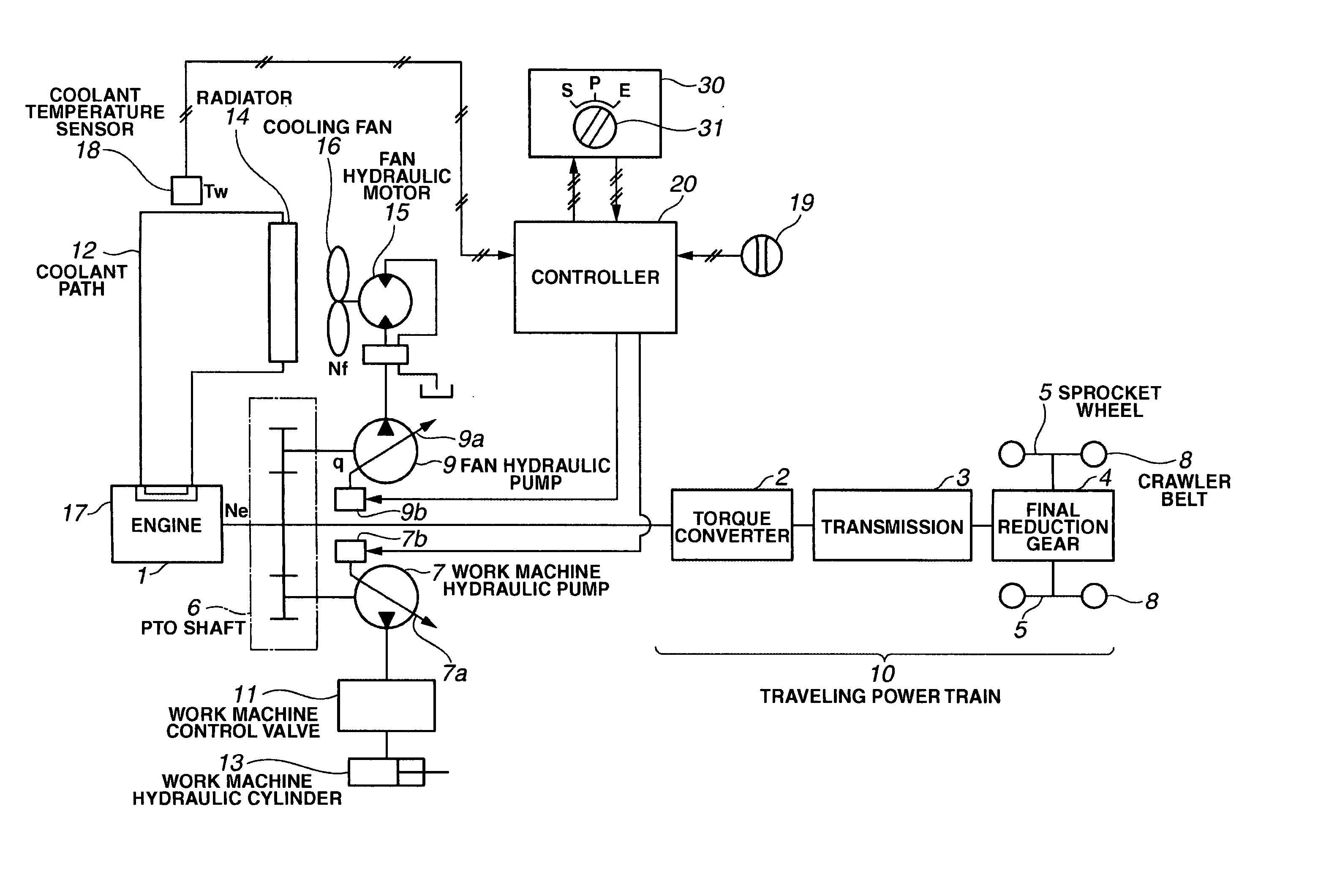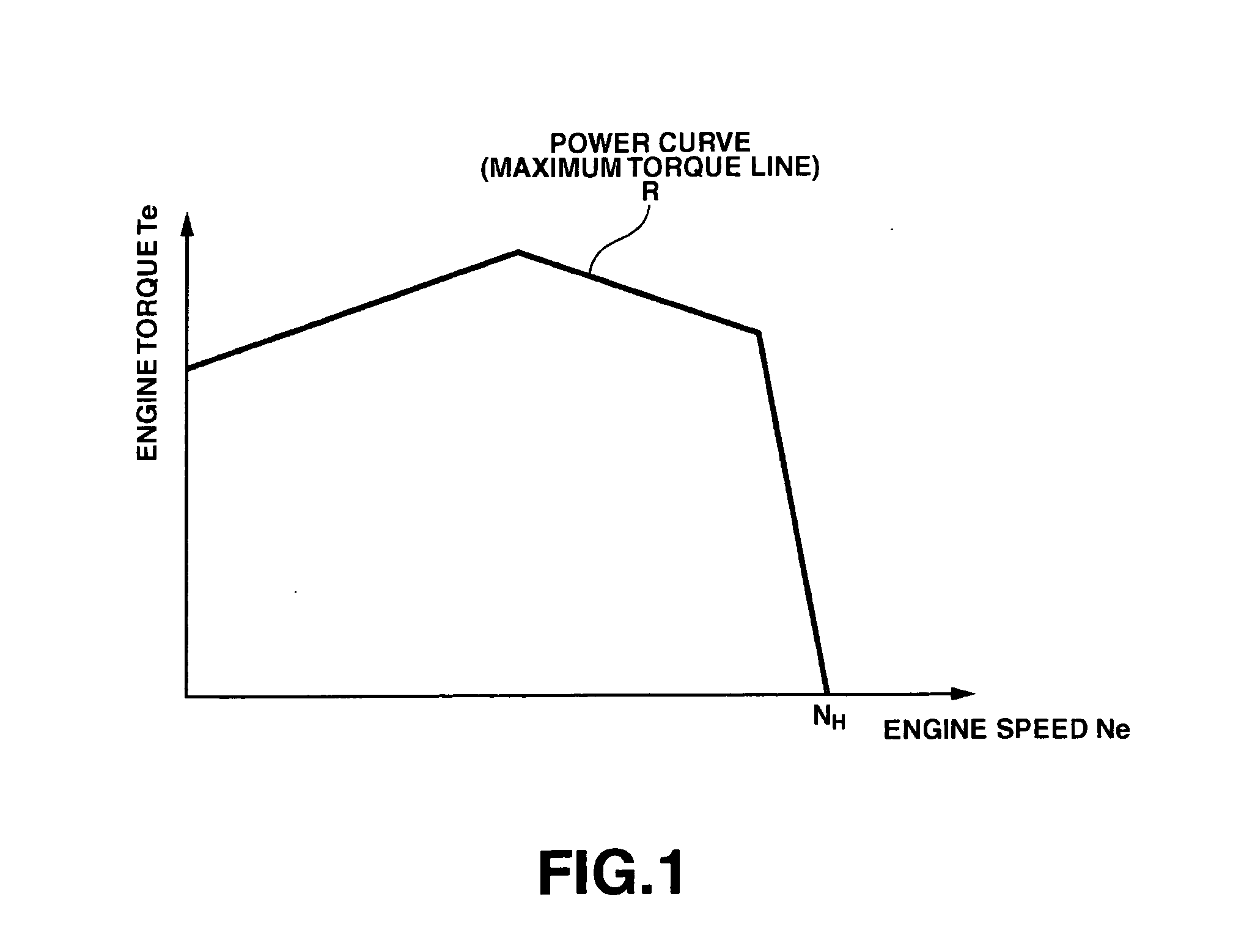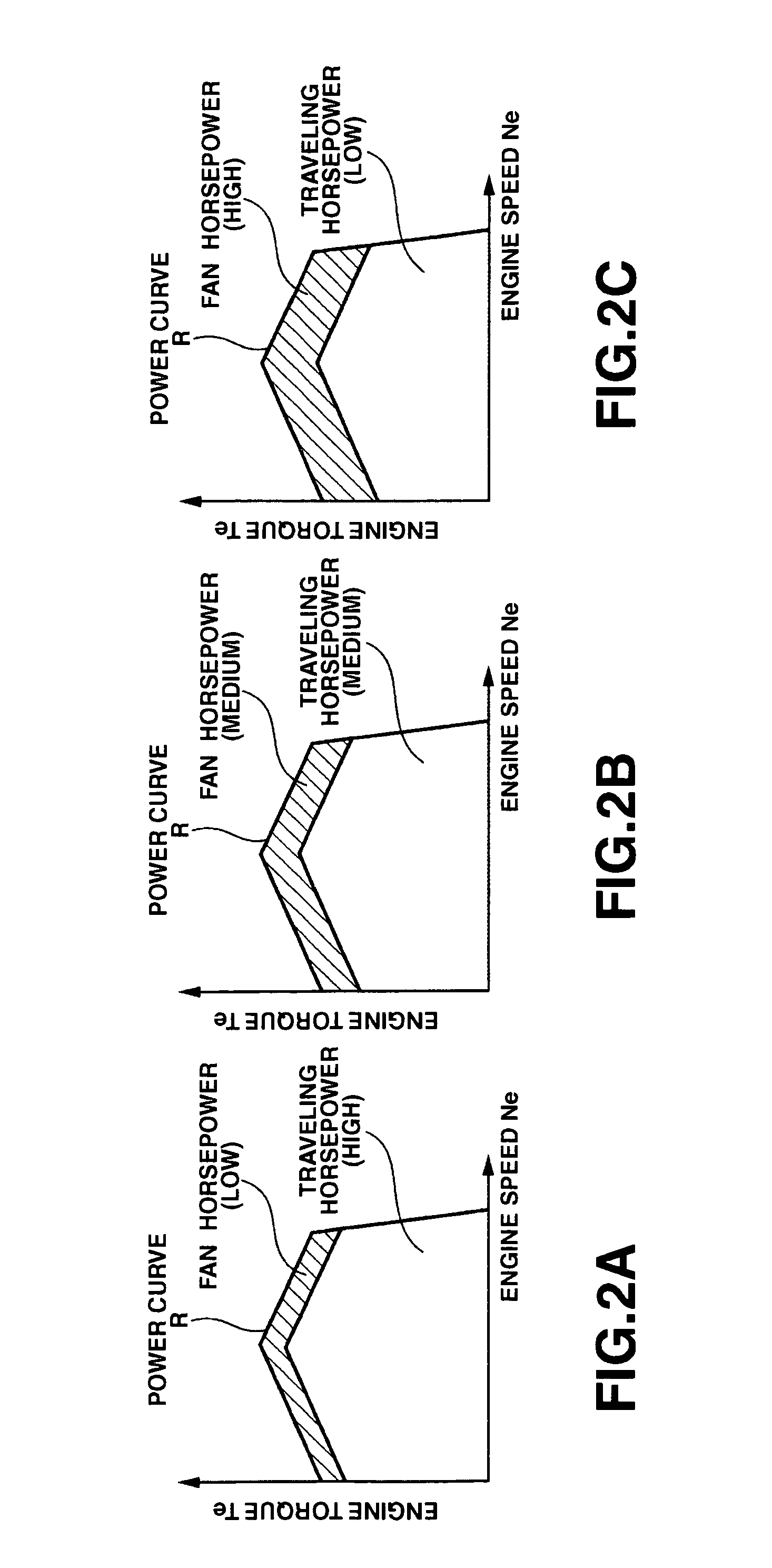Engine control device of work vehicle
- Summary
- Abstract
- Description
- Claims
- Application Information
AI Technical Summary
Benefits of technology
Problems solved by technology
Method used
Image
Examples
first embodiment
[0081] An engine control apparatus for use in a work vehicle according to a preferred embodiment of the present invention will be described with reference to the accompanying drawings.
[0082]FIG. 3 shows a part of a bulldozer according to an embodiment of the present invention, the part relating to the present invention.
[0083] As shown in FIG. 3, the bulldozer has an engine 1 whose output shaft is connected to a power take-off (PTO) shaft 6. The PTO shaft 6 is connected to a torque converter 2, and also connected to a work machine hydraulic pump 7 and a fan hydraulic pump 9.
[0084] The work machine hydraulic pump 7 and the fan hydraulic pump 9 are variable displacement hydraulic pumps having swash plate drive units 7b and 9b, respectively. The swash plate drive units 7b and 9b vary the inclination angles of swash plates 7a and 9a, respectively, to change the pump capacity q (cc / rev).
[0085] The output of the engine 1 is transmitted to a sprocket wheel 5 through the torque converter...
second embodiment
[0162] In the first embodiment described above, the drive of the cooling fan 16 is controlled, as shown in FIG. 6B, so as to increase the fan speed Nf according to the increase of the coolant temperature Tw, while no consideration is given to the magnitude of the engine speed.
[0163] A second embodiment of the present invention will be described in which the drive of the cooling fan 16 is controlled in consideration of the magnitude of the engine speed.
[0164]FIG. 10A is a diagram schematically showing a comparative example to this second embodiment, illustrating relationship between speed Ne of the engine 1 and fan speed Nf of the cooling fan 16. As shown in FIG. 10A, the speed Nf of the cooling fan 16 increases in proportion to the increase of the speed Ne of the engine 1. This means that, in the low speed range where the engine speed Ne is lower than a predetermined speed Nec, the fan speed Nf decreases in proportion to the decrease of the engine speed Ne, while the fan horsepowe...
third embodiment
[0188] The foregoing description of the second embodiment has been made on the assumption that the work vehicle is provided with the work mode selection switch 31. However, the second embodiment above may be modified as required to be applicable to a work vehicle having no work mode selection switch 31.
[0189] For example, the present invention may be embodied, as shown in FIG. 13C, such that the power curve R1 is selected when the detected coolant temperature is in the high temperature range A, the power curve R2 is selected when the detected coolant temperature is in the medium temperature range B, and the power curve R3′ is selected when the detected coolant temperature is in the low temperature range C, in the same manner as when the power mode P is selected in FIG. 13A, and the engine 1 is controlled so that a selected power curved is obtained.
[0190] The present invention is not limited to application in a bulldozer, but is also applicable to any desired work vehicle, as long ...
PUM
 Login to View More
Login to View More Abstract
Description
Claims
Application Information
 Login to View More
Login to View More - R&D
- Intellectual Property
- Life Sciences
- Materials
- Tech Scout
- Unparalleled Data Quality
- Higher Quality Content
- 60% Fewer Hallucinations
Browse by: Latest US Patents, China's latest patents, Technical Efficacy Thesaurus, Application Domain, Technology Topic, Popular Technical Reports.
© 2025 PatSnap. All rights reserved.Legal|Privacy policy|Modern Slavery Act Transparency Statement|Sitemap|About US| Contact US: help@patsnap.com



